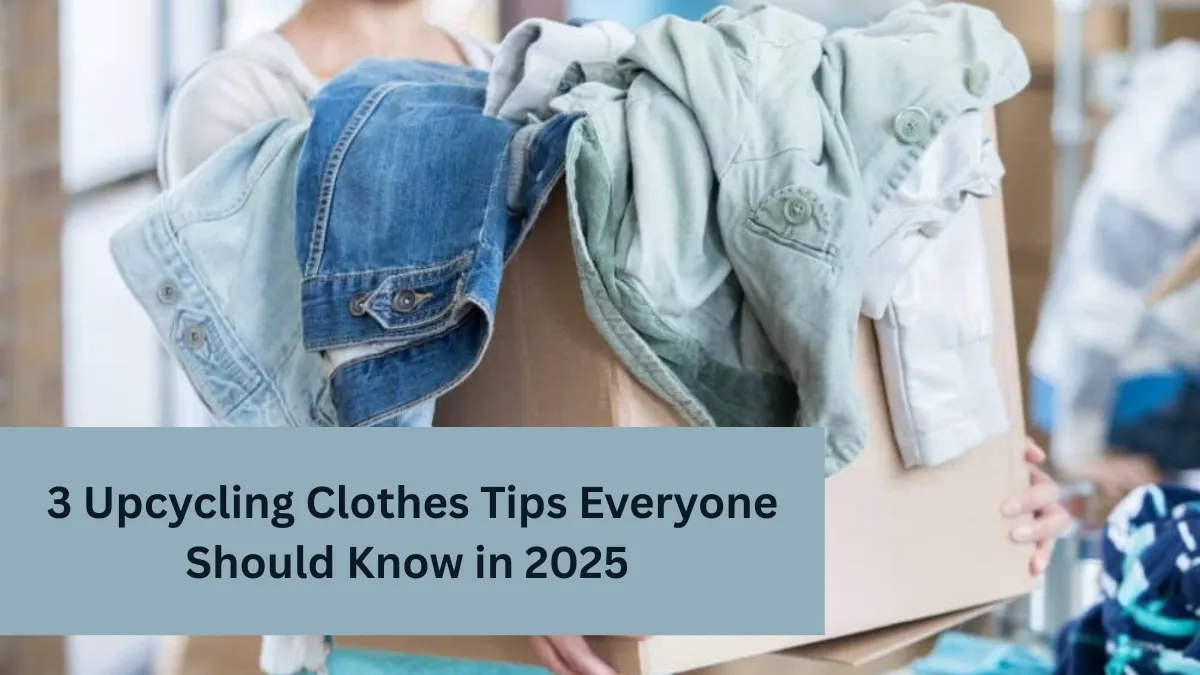Upcycling clothes has become an essential practice in 2025 for anyone passionate about sustainability, creativity, and personal style. As environmental concerns continue to grow, more people are turning away from fast fashion and embracing the art of transforming old garments into fresh, wearable pieces. Upcycling not only reduces waste but also offers a unique opportunity to showcase individuality by customizing clothes in innovative ways. This movement aligns perfectly with the global push for circular fashion, where materials are reused and repurposed instead of discarded.
Whether you are an experienced DIY enthusiast or just beginning to explore sustainable fashion, understanding key upcycling tips can help you make the most of your wardrobe. By incorporating smart techniques, choosing the right tools, and learning how to creatively alter existing fabrics, you can breathe new life into your clothing while reducing your environmental footprint in style.
Choose Quality Over Quantity When Selecting Clothes to Upcycle
One of the most critical tips for successful upcycling in 2025 is to carefully select garments that have a solid foundation for transformation. Quality fabrics and well-constructed clothes last longer and respond better to alterations, making the upcycling process more efficient and rewarding. Instead of grabbing random old items, prioritize pieces made from natural fibers like cotton, linen, or wool, which tend to hold up better during washing, cutting, and sewing.
Avoid overly worn-out fabrics that may tear easily or have irreversible damage. Additionally, consider the garment’s design elements such as seams, buttons, and embellishments, as these can add unique character to your final piece. By choosing quality over quantity, you ensure that your upcycled clothes maintain durability and style, giving you a versatile wardrobe that can evolve with trends while supporting sustainability.
Experiment with Creative Techniques to Personalize Your Clothes
Personalization is at the heart of upcycling clothes in 2025, allowing you to express your individual style through innovative techniques. This year, popular methods include fabric painting, embroidery, appliqué, and patchwork, which add texture, color, and character to old garments. Using eco-friendly textile paints and natural dyes can further enhance the sustainability aspect of your creations.
Incorporating digital printing or heat transfer designs offers a modern twist for those interested in graphic art and patterns. Don’t hesitate to mix different materials such as lace, denim, or recycled fabrics to create layered effects. Experimenting with cutting-edge methods like laser-cutting or 3D embellishments can elevate your designs while keeping them unique. Through trial and error, you’ll discover new ways to turn basic clothing into wearable art that stands out while reducing waste and conserving resources.
Use Tools and Techniques That Enhance Sustainability and Longevity
In 2025, the choice of tools and techniques significantly impacts the sustainability and lifespan of upcycled clothing. Opt for eco-friendly sewing threads made from organic cotton or recycled materials that reduce synthetic waste. Hand sewing is a gentle method that helps maintain fabric integrity, while using energy-efficient sewing machines conserves electricity. When modifying clothes, avoid harsh chemicals and opt for natural cleaning agents to prepare garments before alteration. Heat sealing and eco-conscious fabric adhesives provide alternatives to plastic-based glues, making your creations more environmentally friendly.
Proper finishing techniques such as reinforcing seams and using bias tape can extend the durability of upcycled pieces, ensuring they withstand everyday wear. Additionally, investing time in learning proper care instructions for each fabric type helps maintain the garment’s quality. These sustainable practices not only protect the environment but also guarantee your upcycled clothes last longer and retain their appeal.
Last Thought
Upcycling clothes in 2025 is more than a trend—it’s a powerful way to support sustainable fashion while showcasing creativity and individuality. By selecting high-quality garments, experimenting with diverse personalization techniques, and using eco-friendly tools and methods, you can contribute to reducing textile waste and conserving natural resources. These tips empower you to transform your wardrobe with meaningful style choices that reflect your values and imagination. Embracing upcycling not only helps the planet but also invites you into a community of mindful fashion enthusiasts dedicated to innovation and sustainability. As this practice continues to evolve, each stitch and detail you add to your clothes becomes a statement of care, creativity, and responsibility, making your fashion journey truly impactful.
FAQs
What types of fabrics are best for upcycling clothes?
Natural fibers such as cotton, linen, wool, and silk are ideal for upcycling because they are durable, easier to work with, and respond well to alterations.
How can I make my upcycled clothes more durable?
Use quality sewing threads, reinforce seams, avoid harsh chemicals, and apply proper finishing techniques like bias tape to enhance longevity.
Are there eco-friendly tools available for upcycling?
Yes, sustainable tools like organic cotton threads, natural fabric dyes, and energy-efficient sewing machines can significantly reduce environmental impact.
Can upcycling really reduce textile waste?
Absolutely. Upcycling extends the life of clothing items, reducing the need for new garments and minimizing the amount of textile waste that ends up in landfills.
